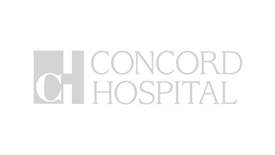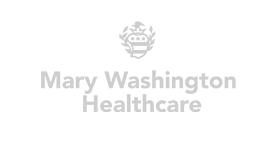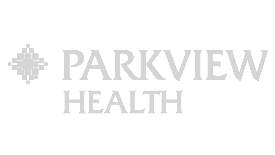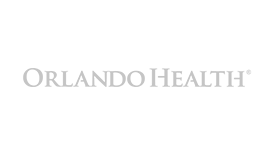
What is a healthcare supply chain?
Health systems, hospitals and other patient care sites require a broad array of supplies to perform diagnosis and treatment, from masks and gloves to catheters and implants. The “healthcare supply chain” refers to the stakeholders, systems and processes required for the flow of products from the manufacturer through to use at the patient’s bedside. The ultimate goal of the healthcare supply chain is to ensure the right products in the right quantities are in the right places at the right times to support patient care.
Where does the healthcare supply chain begin?
Understanding healthcare supply chain sources
The medical supplies and pharmaceuticals used by clinicians in healthcare facilities come from a huge global network of manufacturers. These manufacturers rely on countless suppliers of raw materials and components for the development of their products. In most cases, both the materials/components and finished products are manufactured outside of the U.S.
Leveraging partnerships
The health system or hospital’s supply chain can extend from a factory across the globe to the bed of a patient within its four walls, with many points in between. Therefore, healthcare organizations rely on various partnerships to direct products from the point of manufacture to the point of use and facilitate cost-effective purchasing of these items. In addition to the suppliers themselves, healthcare facilities typically rely on group purchasing organizations (GPO) and distributors for supply chain support.
Ensuring diversity in sourcing
In an effort to reduce the cost of medical supply and pharmaceutical manufacturing, suppliers have increasingly moved their operations from North America to Asia, most notably China and India. While reliance on foreign manufacturing serves to keep product costs low, it has resulted in a more fragile and unpredictable supply chain.
The consequences of the global approach to medical supply and drug manufacturing were clearly seen at the onset of the COVID-19 pandemic when closure of Chinese factories and the closing of international borders resulted in severe shortages of personal protective equipment (PPE).
A key lesson learned during the pandemic is that healthcare organizations must diversify supply sourcing. Reliance on one or two manufacturers for critical products puts a healthcare facility at significant risk for supply shortages if these companies are forced to slow or stop production.
What is a GPO?
A GPO is an entity that leverages the group buying power of its members to secure competitive pricing for medical supplies and pharmaceuticals. Its members are comprised of health systems, hospitals and other patient care organizations (e.g., long-term care facilities, home health agencies, etc.).
There are both efficiency and cost benefits from partnering with a GPO. Instead of a healthcare organization having to negotiate individually with each of its suppliers for savings and discounts, the GPO does this on its behalf. Because the GPO represents hundreds of facilities, its negotiating power is far greater than any single facility alone.
What is CHeS?
In the past decade there has been momentum on the federal and industry level to standardize the way all healthcare supply chain stakeholders identify medical supplies. If all parties use the same language to identify a product, it makes it far easier and more efficient to facilitate recalls, perform adverse event reporting and manage the countless supplies used in patient care.
Founded in 2000, the Committee for Healthcare eStandards (CHeS), now part of the Healthcare Supply Chain Association (HSCA), is a collaborative of organizations dedicated to driving the adoption of data standards in healthcare.
The group endorses the adoption and use of GS1 standards, including the Global Location Number (GLN) for location identification and the Global Trade Item Number (GTIN) for item identification, as well as use of the Global Data Synchronization Network (GDSN) for synchronization and sharing of these data standards among organizations.
The GS1 standards are one of three accredited by the FDA as unique device identification (UDI) issuing agencies. The other two are the Health Industry Business Communications Council (HIBCC) and the International Council for Commonality in Blood Banking Automation (ICCBBA).
CHeS also endorses the use of the United Nations Standards Products and Services Code (UNSPSC) for the classification of healthcare products and services.
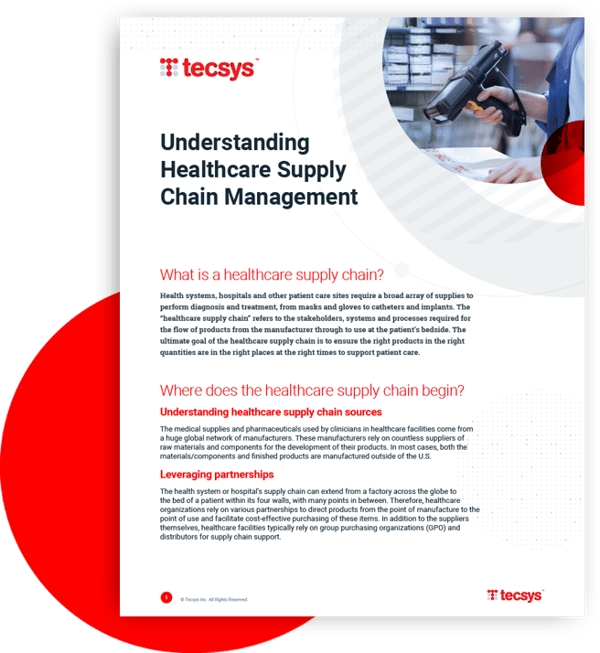
Access the ultimate guide to healthcare supply chain management to learn the trends, challenges, strategies and solutions for achieving complete visibility and control over all the supplies used in patient care.
get e-bookHow do you build a patient-centric supply chain?
Hospital leaders must set the tone for a patient-centric approach to healthcare delivery, so that all employees, including those outside of hands-on patient care, make decisions based on their impact on the patient. It takes the clinical and operational sides of an organization to come together in a collaborative fashion to deliver the highest quality of affordable care. Healthcare organizations that embrace modern supply chain tools and technologies can automate these processes, enabling clinicians to maintain their focus on the patient. All disciplines within a healthcare organization need to be committed to collaborating with each other to maximize their contributions and help ensure the best care is delivered to the patient.

Healthcare supply chain trends
Resiliency
Building a more resilient healthcare supply chain, one that can quickly and seamlessly pivot to address disruptions in the flow of goods from manufacturer to care delivery site, has become a top priority for health systems and hospitals in the wake of COVID-19. A critical factor in successful emergency preparedness is demand planning. To perform accurate forecasting of future product demands, healthcare organizations must have real-time visibility into what supplies they have ordered, the quantities of these items in their inventory (in both warehouses and clinical areas) and when they are used in patient care.

Clinical integration
There has been growing recognition for the role that supplies play in a health system or hospital’s overall financial outcomes as health leaders attempt to secure an answer to the question, “What is the true cost of care?” Increased collaboration among supply chain, clinical and financial teams in what has been termed “the clinically integrated supply chain” is beginning to establish a link between specific products, patient outcomes and financial impact of product choices even after patients walk out the door (e.g., complications, readmissions, etc.). Gaining a clear understanding of cost, quality and outcomes requires that these collaborative teams have access to accurate and timely data on product procurement, management and usage through to the point of care.
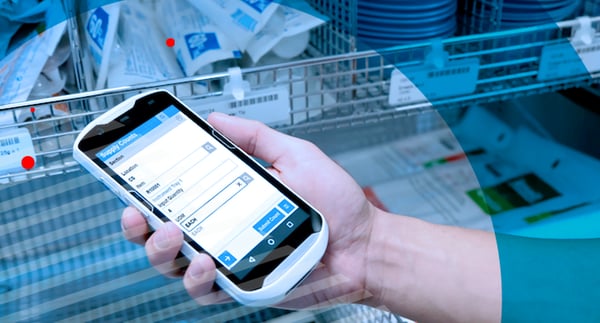
Proactive vs. reactive supply management
Ask any supply chain leader who has been on the receiving end of a clinician outraged when a product they need is unavailable whether it is better to proactively manage supplies versus reacting to shortages and the answer will be a resounding, “yes.” In recent years, the healthcare supply chain has been improving its visibility to inventory and product consumption data to drive more accurate demand planning. Many teams have also transitioned to self-distribution and direct sourcing models that offer greater control compared with reliance on third-party distributors. The technologies that enable electronic and automated inventory management, from the time a product arrives at a healthcare facility to the time it is consumed, have evolved as well, leveraging artificial intelligence (AI) to deliver advanced analytics on which supply chain leaders can make proactive, informed decisions.
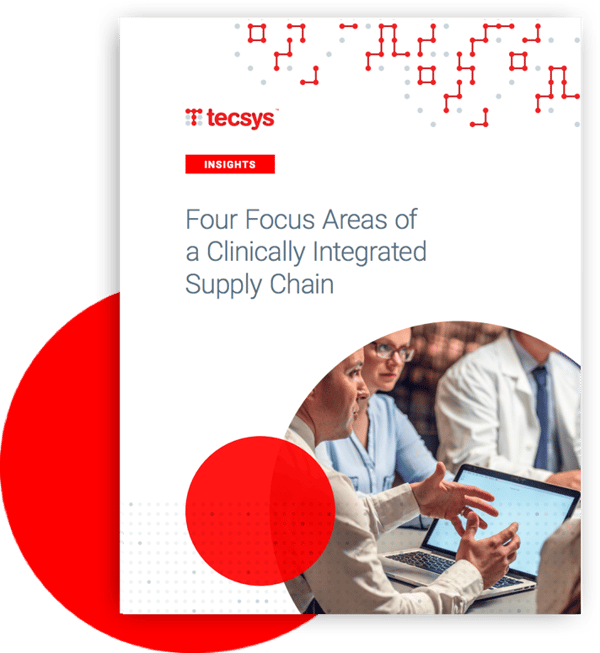
Analytics enables healthcare organizations to reduce costs while maintaining high quality through greater standardization, better inventory forecasts and optimized preference cards. The following insights are key elements to focus on to achieve a clinically integrated supply chain.
get e-bookHealthcare supply chain strategies
The complexities of healthcare supply chain management
The main challenges in healthcare supply chain management today are visibility and control. After a manufacturer or distributor delivers medical/surgical supplies to a healthcare facility’s receiving dock or other delivery location, these items are dispersed to any number of clinical areas. Then there are high-cost consignment products (e.g., implants, stents) that are typically walked through the doors of a facility by the manufacturer’s sales rep. Add to that the countless pharmaceutical products that are a distinct supply chain of their own and it is clear to see why supply chain management in the healthcare setting has many complexities.
Common challenges in healthcare supply chain management
ERP and EHR Limitations
The two main information technology (IT) platforms that health systems and hospitals use today are the enterprise resource planning (ERP) system and the electronic health record (EHR) system. Neither have the capabilities required for holistic, enterprise-wide inventory management. The ERP system provides visibility into medical/surgical supplies that the healthcare organization ordered but misses costly and critical items that are crucial to manage (e.g., implants, pharmaceuticals, etc.). The EHR system documents products used in patient care, but only when clinicians enter items into the system, which is a significant challenge when documentation is manual and time-consuming. While most healthcare organizations attempt to integrate the ERP and EHR, there is no automated mechanism to record the depleted inventory and trigger processes to procure more.
Disconnected point of use (POU) systems
To facilitate inventory management in clinical areas and replenishment of supplies, health systems and hospitals employ multiple point of use (POU) systems. The Perioperative area uses one system, Cath Lab another and the Nursing Units yet another. While these tools enable supply replenishment based on par levels for general medical/surgical supplies, they do so in silos. And because they are not integrated with each other, or with the ERP or EHR, they only provide visibility into the supplies within the confines of that specific care area. Therefore, when items are delivered to care areas, the supply chain loses visibility to them. They have no way of tracking when products are moved, where they are stored and the status of expiry dates. The disjointed nature of inventory management in care areas also presents challenges with recall tracking and adverse event reporting. This results in any number of inventory management issues – from overordering or stockouts, to products expiring on shelves before they can be used. Even more concerning is the risk that an expired or recalled item is used on a patient
Clinical time spent on inventory management
Without a way for the supply chain to effectively manage supplies in care areas, these responsibilities fall to clinicians. This is especially true of consignment products that are not contained within the ERP system. Nurses are left with the responsibility of managing these items, documenting their use in the EHR and collecting the information required to pay the manufacturer, bill the patient and ensure supply replenishment. In most cases this is done manually, with nurses peeling stickers off product packaging during a case and later keying this information into various IT systems.
Even the documentation of general medical/surgical supplies contained within the item master presents a significant burden to clinical teams. During a case, clinicians must stop to document product usage in the EHR so that these items are billed and reimbursed. With their main focus being the patient in the room, it is common for clinicians to miss items, resulting in lost charge capture. This is especially true when the process is manual with clinicians having to physically key data into the system.
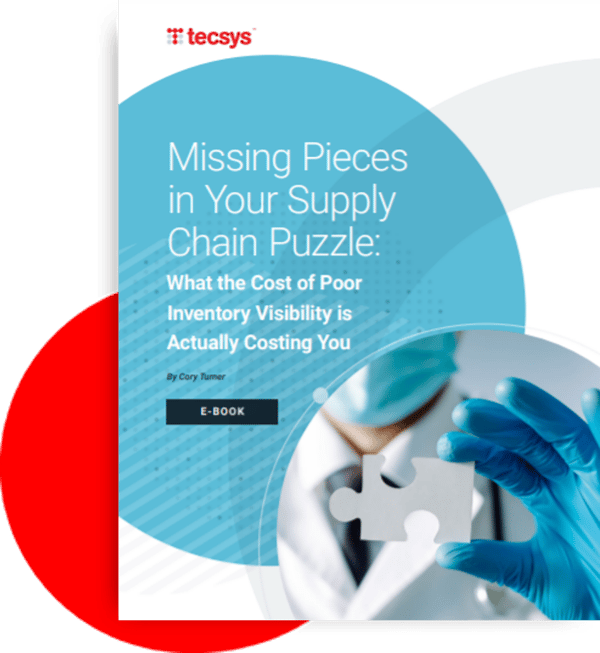
By consolidating your processes and data into a single platform, you can eliminate the one-off POU solutions and achieve substantial savings. Learn what the cost of poor inventory visibility and management is actually costing you and your supply chain.
get e-bookLack of data access
In an ideal world, the supply chain would have a clear and complete picture of what supplies were procured, what is currently in inventory, where they are stored, the status of these items (e.g., expiry dates, recall status), what has been used and whether replenishment has taken place. In reality, the supply chain has no way of seeing the big picture with regards to supplies, or the granular level details required to manage them effectively, because systems and processes are fragmented.
Without this visibility, it is impossible to perform advanced analytics on supply procurement and usage as well as conduct demand planning and forecasting scenarios to ensure supply availability without overordering. The supply chain also faces challenges when it comes to evaluating supplier performance, optimizing GPO and local contracts, and working with clinicians on both supplier diversification and product standardization initiatives when it does not have complete data on the supplies within its organization.
Reliance on third parties
As we have seen during the COVID-19 pandemic, health system and hospital reliance on third-party distributors and manufacturers can backfire in times of crisis. When a healthcare organization has only limited supplies on hand and relies on third parties to replenish what was used, or in the case of the pandemic, deliver significantly higher volumes of critical products (e.g., PPE), they come up against competition from other health systems and hospitals requiring these same items. When critical supplies are in the hands of third parties, rather than on-site or nearby in a central storage area managed by the healthcare organization, any disruptions in the extended supply chain poses risks that supplies will not be available.
COVID-19 has prompted many healthcare organizations to rethink their inventory management practices, most notably the “Just in Time” approach where they keep limited stock on hand and rely on third parties to deliver items as they are needed.
Regulatory and industry compliance
There has been growing recognition among regulators, industry associations and individual healthcare organizations around the importance of tracking supplies at the item level throughout the supply chain – from the point of manufacture to the point of use. As a result, regulations have been developed to drive more accurate product tracking and tracing, including the U.S. Food & Drug Administration’s unique device identification (UDI) rule and U.S. Health Resources and Services Administration (HRSA) 340B statute. Because the ERP system contains only general medical/surgical supplies, and in most cases lacks item level details on these items, it cannot support the level of traceability required to meet these regulations, or perform lot tracking, recalls and expiration date management necessary to prevent patient harm.
How can providers overcome common challenges in healthcare supply chain management?
Creating a holistic view of inventory
While the ERP system provides visibility into medical/surgical supplies that the healthcare organization ordered, and the EHR system documents the products clinicians used in patient care, neither of these systems have the capabilities to facilitate holistic inventory management. The third major component that is missing in most healthcare organizations is an enterprise-wide SCM system that automates the tracking of all supplies used in all care areas with integration to ERP, EHR, POU and financial systems.
Mapping and monitoring your supply network
An enterprise-wide system integrating an SCM with your ERP and EHR systems that features automated tracking and management of supplies in all storage and use areas can serve as your central platform for supply chain digital transformation. By consolidating the management of all supplies within a single system that automates supply tracking from receipt through point of use, you can gain complete visibility into your inventory and control over it.
Improving management of your supplier base
At an industry level, there are efforts to move drug and medical supply manufacturing back onshore or nearshore to increase the resiliency of the healthcare supply chain. With manufacturers closer to home, the supply chain grows shorter and there are less opportunities for breaks in that chain.
Building redundancy into your supply chain
At the individual facility level, supply chain teams have been working to identify trustworthy and safe alternate suppliers that they can turn to if their primary sources are unable to supply what they need in terms of products for any reason, whether it is COVID-19, a natural disaster or some other unanticipated event.
Standardizing
Improving supply management, utilization management and standardization doesn’t happen without technology. By reviewing product performance data on an ongoing basis, clinicians gain evidence that enables informed decisions on physician preference item (PPI) standardization and supplier consolidation. Standardization and consolidation cut costs by reducing inventory levels, providing leverage in contract negotiations to obtain better pricing and reducing the overhead costs associated with working with multiple suppliers.
Obtaining necessary data
Healthcare organizations that collect product data and track product movement electronically can improve supply chain accuracy. Providing visibility across supply chain processes that span the ERP and EHR requires a common data foundation that allows access to near real-time data on supply availability and usage for proactive decision-making.
Centralizing forecast data
By analyzing historical trends, organizations can create better forecasts for optimal inventory levels of each product, reduce spending on specialty products with product standardization and identify bulk buying opportunities. With a point of use inventory management solution, the supply chain can manage the optimization of inventory levels for appropriate case activity, handle case picking routes for faster picking without mistakes and automate the data capture of product usage during procedures.
Focusing on performance
Fully automated inventory management processes reduce the burden of manual data entry on frontline and back office staff, leading to greater engagement and reducing burnout. With single sign-on and user interface integration, clinicians can perform a single scan that accurately records case information within multiple applications (e.g., clinical, financial, operational). This level of automation also eliminates any double-entry processes to reduce the risk of erroneous input while providing real-time patient safety alerts.

Many organizations strive to embrace Lean practices and reap the benefits of continuous improvement, yet it turns out there are a lot of barriers to overcome. Learn how your organizations can overcome three barriers to continuous improvement in healthcare.
Get e-bookDeploying new tactics in healthcare supply chain inventory management
There is widespread movement to detox unnecessary systems and processes for inventory management by moving to a single, consolidated supply chain technology platform for management of ALL supplies in ALL clinical areas. A holistic platform can track all categories of supplies from the moment they enter an organization to the time they are consumed. This includes the most expensive items that fall outside of the scope of an ERP system. Modern, digital solutions for supply chain management eliminate unnecessary systems, streamline processes and deliver immediate insights that supply chain leaders need to make evidence-based decisions. They help bridge the gaps and pave the path to supply chain greatness in the healthcare industry.
What to look for in healthcare supply chain management solutions

Tecsys Elite™ Healthcare Solutions
Tecsys Elite™ Healthcare solutions bring inventory processes, tools and technologies into your clinical and procedural care settings to manage costs, enable standardization, capture product utilization and achieve end-to-end supply chain clarity and control. Our solutions focus on growing healthcare supply chain maturity from operational to strategic to optimized. With Tecsys’ supply chain platform, healthcare organizations can significantly optimize business processes, make more informed decisions, identify new revenue opportunities, accelerate growth, meet demands and deliver quality patient care. This gives health systems the power to control their own destiny by managing their supply chain, from source to patient. Clinicians can invest time in patient care, while behind the scenes the Elite™ Healthcare supply chain platform provides efficient and effective execution.

Supply chain management
Elite™ Healthcare Supply Chain Management solution helps top IDNs across the country close the gap between the ERP and EHR, take costs and waste out of the supply chain and achieve enterprise-wide visibility and control of inventory. Our supply chain management system is a scalable, transactional engine to support your entire health system. Elite™ Healthcare SCM gives you a powerful inventory dashboard for end-to-end visibility of all physical inventory assets across your supply chain network. The flexibility and adaptability enable you to set up business rules for specific sources of supply at the customer level and/or at the SKU level. Whether shipping directly or initially shipping to your warehouse location for immediate delivery, Elite™ Healthcare SCM helps deliver the right supplies, in the right place, at the right time.

Warehouse management system
Elite™ Healthcare WMS is the catalyst to gain clear and immediate insight into your inventory management to make efficient, informed decisions. Our warehouse technology offers highly intuitive direction for task completion as well as the ability to make system updates when organizational or industry requirements change. A warehouse platform, such as a consolidated service center, can help deliver high-quality patient care and reduce operating costs by creating an infrastructure that supports the purchasing, warehousing, transportation and distribution of supplies across your entire health system. Furthermore, you can integrate transportation and delivery management capabilities into your Elite™ Healthcare WMS to bolster end-to-end visibility across warehouses and shipping functions, resulting in a more holistic view of your operations.

Access this ultimate guide to healthcare supply chain management to learn the trends, challenges, strategies and solutions for achieving complete visibility and control over all of the supplies used in patient care.
get e-book
Point of use
Elite™ Healthcare POU is an intuitive system that helps ensure efficient, automated processes are deployed throughout the hospital to optimize clinical workflows. Our point of use solution responds to inventory needs and clinical requirements on one supply chain platform. The Elite™ Healthcare POU system allows you to track and trace any type of item from receipt to utilization during a procedure. This enables you to gain inventory visibility and automate the logistical activities in your clinical, procedural and lab environments to manage costs and improve standardization. Elite™ Healthcare POU technology provides analytics tools that leverage accurate, real-time data and simplifies user interactions with RFID, barcode and mobile technologies.

Pharmacy
Elite™ PIMS helps integrate pharmaceuticals into the broader healthcare product supply chain to gain global visibility and drive informed decision-making. Elite™ PIMS provides clinical support tools that streamline pharmacy-related tasks, reduce medication waste and control overall pharmacy supply chain costs. This allows healthcare institutions to fully recover avoidable expenses sustained in the management and dispensation of medications, while preserving accuracy and timeliness. Tecsys unifies your pharmaceutical IT and management, reduces reliance on third-party distribution and eliminates manual tasks to centralize your pharmacy’s supply chain. Our connected hospital pharmacy system will help you achieve efficiency, data accuracy, cost control and quality patient care.








